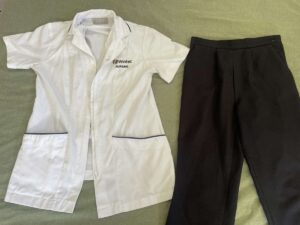The contention contributing to congestion
It is time to deflate the myth that cycleways only benefit cyclists. At the same time, we should try to re-humanise the people who ride bikes.
There is always a backlash from motorists when a cycleway or
related project is funded. Usually, it is cited that these projects are a waste
of money or that cyclists should not be on the road.
“There’s a feeling that it’s only a narrow portion of society that actually cycles and therefore benefits from cycling infrastructure.”
Sarah Thomson, Hamilton City Councillor
It is because of this that a phenomenon known as “bikelash” exists, which is the “disproportionate negative reaction within communities to cycleway projects”. It is well documented and is a far too common occurrence. Comments like those below are a typical example of bikelash.
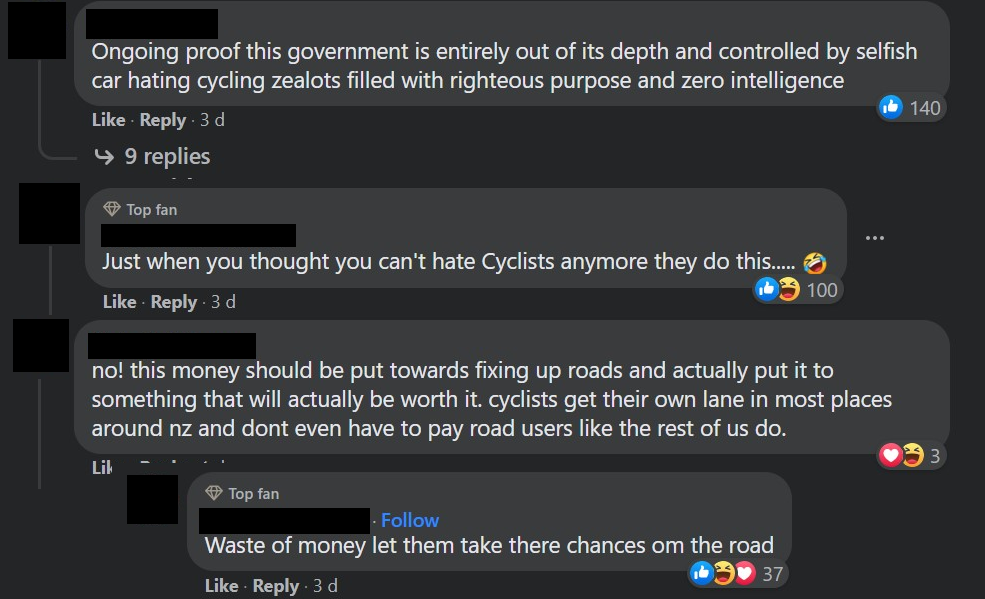
Councillor Sarah Thomson believes “The word cyclist itself
is problematic,” saying that “We don’t go around saying I’m a motorist… People
put cyclists in a box as an ‘other’ person” which makes it easy to think of cyclists
as another group entirely.
The group consists of “New targets” to hit, or in the words of Kerre McIvor “Swarms of lycra-clad rats, coming out of every side street and road”. Not your friends and family. Not your 11-year-old daughter biking to school on a Tuesday. Not your 77-year-old grandad using his E-bike to get milk from the dairy. This us vs them narrative needs to change.
An article published by the NZTA claims that, addition to improving congestion, public health, and environmental benefits, investing in cycle ways saves money for cities and their residents, while making cities quieter in the process. So, when cycleways are being funded, the goal is not to “take something away” from motorists, but to improve cities for everyone. Including motorists.
In May, Mark Bunting and Sarah Thomson shared what the Hamilton City Council has planned in their Biking and Micro-Mobility Programme at a Grow Waikato – Transport talk.
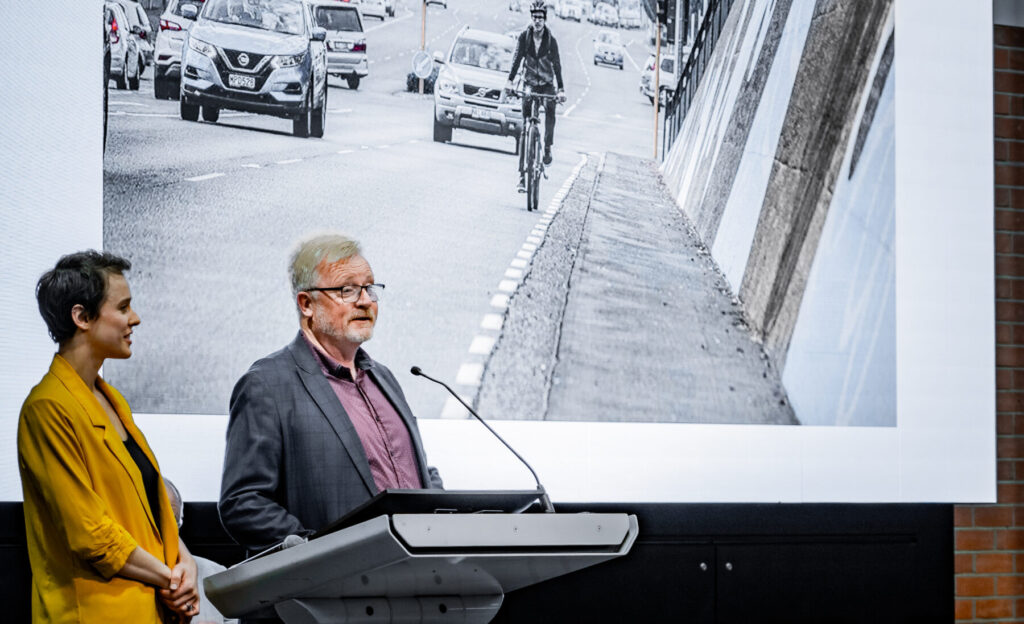
The pair gave the stats that are usually present when cycling is discussed, such as 62% of all emissions in Hamilton are being made by land transport. And how 87% of all trips made in Hamilton are by car, with 60% of these trips being less than 5km, a 20-minute bike ride.
With congestion levels matching Auckland’s on average, surpassing it at peak times. It was perhaps unsurprising to learn that by 2036 the CBD will no longer have the capacity to support the volume of cars that will be using it.
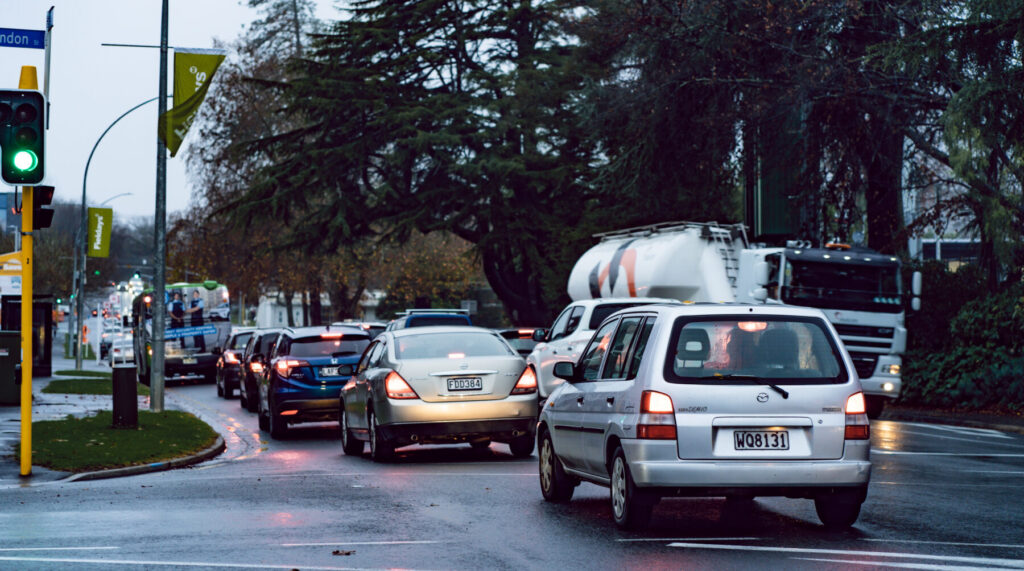
As scary as it is, it is time to think about, and relinquish
some of our car dependence. This does not mean people should not drive cars. It
means people need to start becoming open to the idea of using alternative forms
of transport when a car is not necessary or practical, such as cycling and
walking. Particularly when most trips within Hamilton are less than five
kilometres in distance.
Unfortunately, per kilometre, people who ride bikes are 15
times more likely to be seriously injured than motorists.
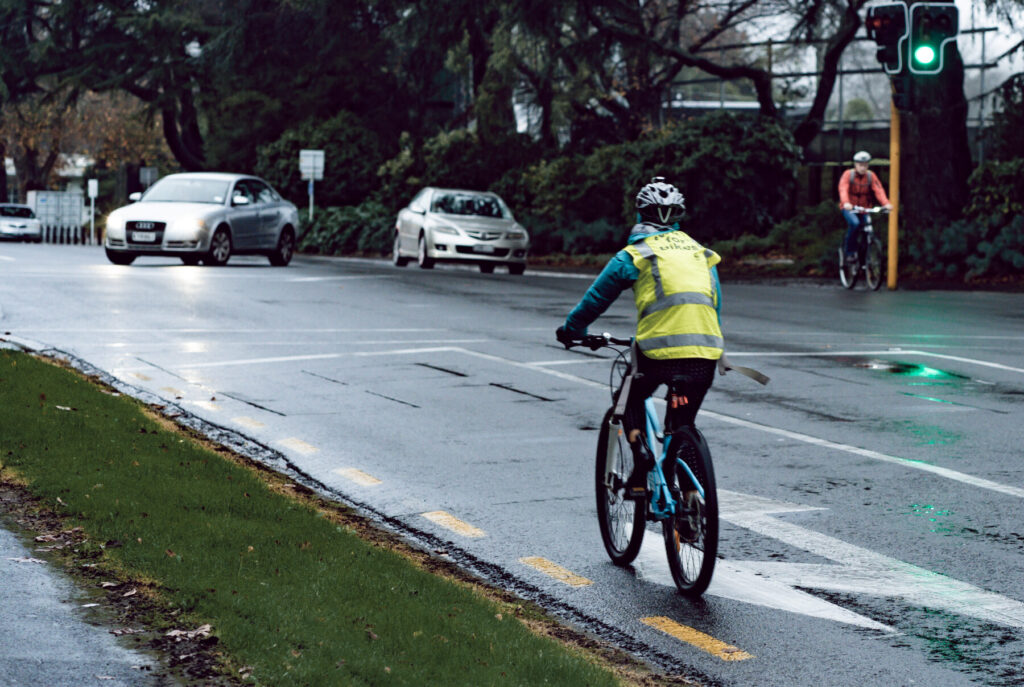
If people want to walk and cycle, they shouldn’t be having their lives put at risk. I think that is unjust, right now you are so much more likely to be killed or seriously injured, taking these modes of transport instead of driving. Particularly because you’re doing something which is good for everyone.
Sarah Thompson
Results from a Council survey revealed that 67% of people have an interest in cycling, but do not do so due to safety concerns. By making cycling safer, we can encourage it to become a more adopted form of commute.
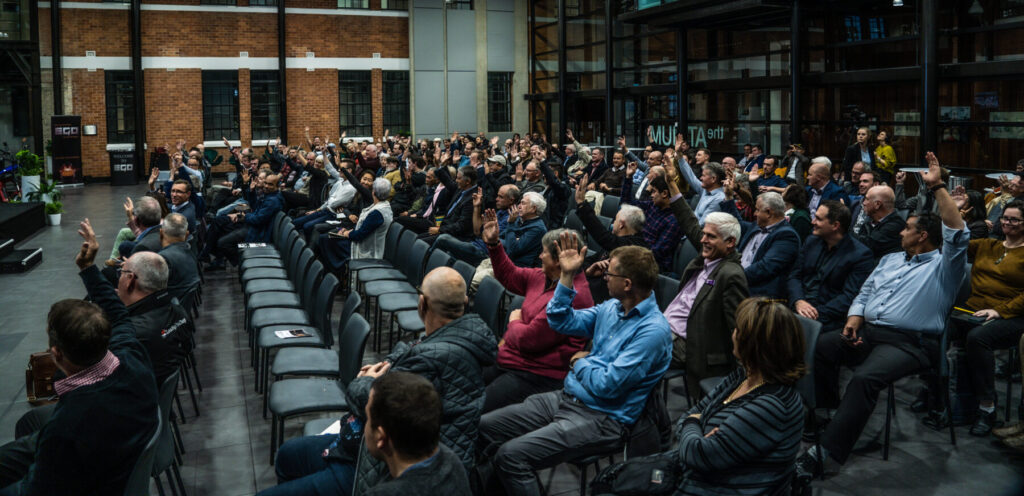
During their talk Bunting pre-emptively reassured the audience that they were not “anti-car”. Instead saying “we are a car town… it’s not cars versus bikes, it’s people moving around town in the most practical way”. The Council is not against car use. But cycleways are important because for every person who cycles or uses an alternative form of transport to get to work, there are fewer cars contributing to congestion.
“If you’re getting some people out of their cars and onto bikes, that benefits people who either don’t want to ride or must drive for whatever reason” – Matthew Leach, Bike Waikato.
All up, $900 million has been allocated to the council’s bike and micro-mobility programme across the next 30 years. The programme aims to make cycling in Hamilton safer and more appealing, by connecting cycleways together, as well as creating dedicated cycle “highways”. Walking, E-scooters and other forms of micro-mobility development are in the mix too.
It simply does not make sense for us to move 1.5 tonnes of
metal with us to work each day, our congestion problem will not be solved by
adding more roads to a town that cannot fit them. Projects like The Bike and
Micro-Mobility programme need to be supported so that our future stays mobile
and healthy. But they are the type of project that receives bikelash styled responses.
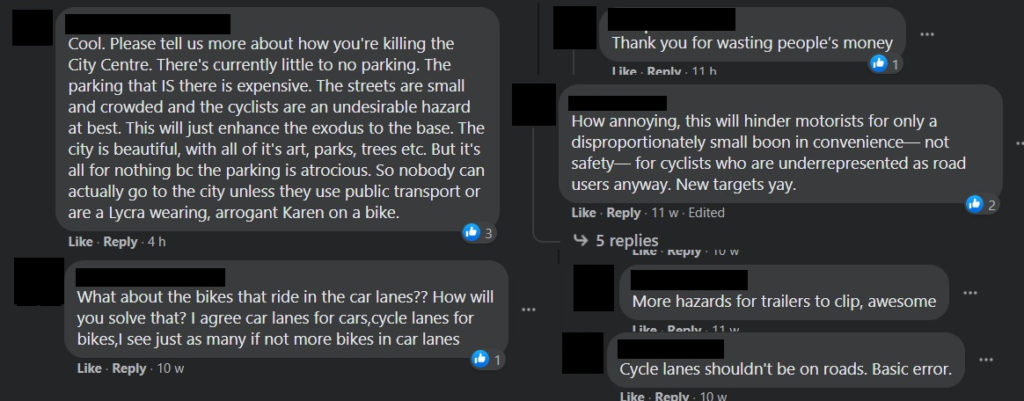
Currently, cyclists are the victims of an infrastructural lapse, making them an agitation to pedestrians and motorists alike. Motorists do not want money spent on cycleways but will complain about cyclists being on “their road”. Ironically, those same motorists are the sorts that would tell cyclists to get off the footpath when they have nowhere else to go. Due to a lack of connected cycleways and poor attitudes, cyclists do not have a clear place of belonging in New Zealand.
A mode shift is needed towards alternative forms of
transport. Not only is it important that we adopt them, but it is also critical
that we respect them, so infrastructure can be developed without needless
contention.
However, promoting cycleways is problematic and as Bunting
encountered, can quite easily come off as “anti-car”.
I spoke to Matthew Leach, a committee member of Bike Waikato, to learn how we can better present cycleways. Leach believes to avoid a negative reaction, “It’s really important to talk about the wider benefits (of cycleways) and not just how it benefits existing bike riders. So that’s things like climate change and public health and congestion.”
“When people don’t have all of the information is often quite a tense relationship, because people just see something being taken away from them without understanding the context around that.”
Matthew Leach
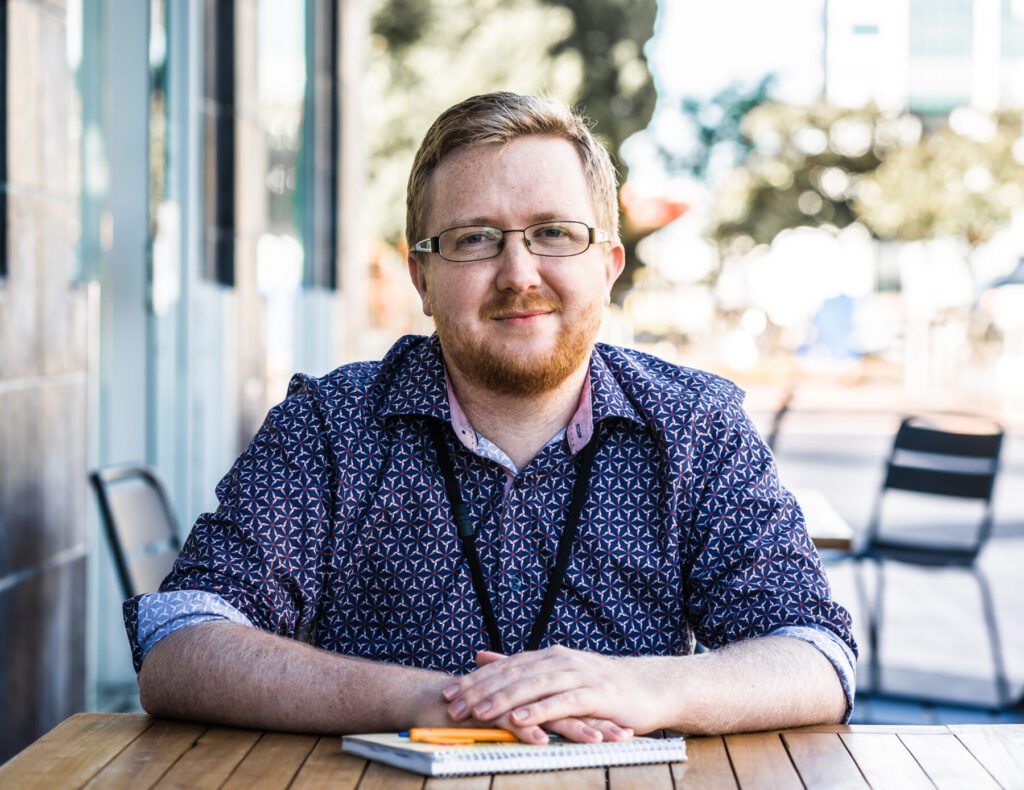
Leach’s father was killed in 2017, when he was hit by a truck while cycling Te Rapa straight. When speaking to Matthew about his role at bike Waikato he revealed that it was his father’s death that prompted him to get “off the side-lines and get involved.”
Leach, like Thomson, believes that society’s association with the word “cyclist” is a problem. Because the term takes away the human element from someone riding a bike. To change that perception of cyclists, the diversity of the different type of people riding bikes needs to be portrayed, instead of showing people in fluorescent vests, hunched over with their heads hidden. Funding cycleways is always going to be a problem when the people who use them aren’t seen as real humans with personalities.
“I think part of the challenge is sort of reclaiming that identity, the language we try to use is it’s not cyclists, it’s ‘people on bikes’ or people using bikes. You know, it’s an actual person that you’re interacting with.”
Matthew Leach
When speaking about the kind of feedback that people on bikes receive; Leach retorted, “If that was your mother, father, sister, brother, niece, nephew, whatever, is that how you would behave with them?”
Every person that we see riding a bike is a real, unique person.
Getting to work or going to school. They
are not just fluorescent, lycra-wearing cyclists.
Bike Waikato is one of the many organisations that believe
in this and their “goal is simple. To get more people on bikes, safely”. Doing
so by promoting safer ways to ride, hosting events about bike safety as well as
pushing for infrastructural change. Additionally, Bike Waikato often showcases any
new cycling infrastructure implemented by the council.
Cycleways are not just coloured strips of asphalt. They are for the 11-year-old girls that get squeezed between a row of parked cars and a bus on the way to school. They are for the cars that are stuck in congestion, where fewer cars on the road are their only solution. They are for our health, our children, and our future, the air we breathe and the ice that melts.
At the site of Matthew’s father’s accident, a cycleway was installed
in response to what had happened. Cycleways are for him too.
It is time to rewrite the car vs cyclist narrative and
realise that we are all just people trying to go places safely.


